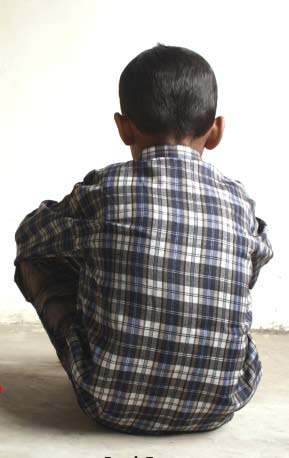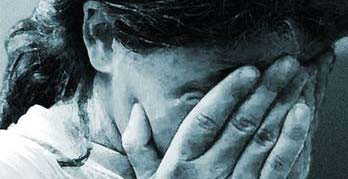
In restrooms, a reminder, a piece of laminated paper that is attached to stall doors, illustrating warning signs and ways to get help for abusive relationships. This is not an advertisement for lunch specials at a local restaurant, discounts at a gym down the road, or the latest trends at a clothing store. This notification is a solemn reminder of domestic abuse. Most people can unfortunately relate to the bathroom stall public service announcement on domestic violence because they or someone they know suffered from an abusive relationship.
While some races and ethnicities may be at higher risk for domestic violence, it is visible in all groups, ages, rich, poor, educated, and illiterate, according to Molly Warrington’s “Fleeing from Fear: The changing role of refugees in meeting the needs of women leaving violent partners.”
No one is immune from this violent behavior.
 Domestic abuse is a quiet affliction that continues to cause damage to families, communities, and society. The impact on a family is lasting, with children in many cases, continuing the abusive legacy — by either becoming the abuser or the abused. Since most domestic abuse attacks are not reported, the overall impact remains unclear, but the American Congress for Obstetricians and Gynecologists speculates that domestic abuse, or intimate partner violence, may be America’s most pervasive health problem.
Domestic abuse is a quiet affliction that continues to cause damage to families, communities, and society. The impact on a family is lasting, with children in many cases, continuing the abusive legacy — by either becoming the abuser or the abused. Since most domestic abuse attacks are not reported, the overall impact remains unclear, but the American Congress for Obstetricians and Gynecologists speculates that domestic abuse, or intimate partner violence, may be America’s most pervasive health problem.
The lack of reporting causes violent relationships to go under the radar, leaving concrete data as to how often they transpire unknown. Along with the actual violence that occurs, an article, “Depression, Substance Abuse, and Domestic Violence,” assessed the impacts of domestic abuse in lower-income families. The article states that women on welfare are more likely to become depressed, and that as a result, the depression leads to higher instances of drug and alcohol abuse.
 The cycles of domestic violence leads to other unhealthy practices, such as drug and alcohol abuse, which in turn, leads to issues of poor productivity at work, an inability to keep a job, absenteeism, and health problems. Along with the abused partner, the abuser is also prone to higher instances of work related problems. While the article, “Depression, Substance Abuse, and Domestic Violence,” investigates the effect of violent behavior in lower-income families, the concern of unhealthy behavior in abused spouses is universal in all socioeconomic groups. One reason the authors may have researched women on welfare is because this is a population that is easier to track than other groups.
The cycles of domestic violence leads to other unhealthy practices, such as drug and alcohol abuse, which in turn, leads to issues of poor productivity at work, an inability to keep a job, absenteeism, and health problems. Along with the abused partner, the abuser is also prone to higher instances of work related problems. While the article, “Depression, Substance Abuse, and Domestic Violence,” investigates the effect of violent behavior in lower-income families, the concern of unhealthy behavior in abused spouses is universal in all socioeconomic groups. One reason the authors may have researched women on welfare is because this is a population that is easier to track than other groups.
The American Congress for Obstetricians and Gynecologists says that when a woman lives in a home filled with domestic violence, more than half of the time, the children living in the home suffer the same abuse. And those children believe the violent behavior is acceptable and participate in or become the victim of domestic abuse in their later relationships, thus concluding that violence is the way to deal with problems. Whether the child witnesses the actual abuse of a family member, hears fighting between parents, or views the physical marks of abuse like bruises on a parent, the article, “Violence Against Women” says that violent homes cause children to withdraw and possess behavioral problems that trigger bad performance at school and outbursts of violence toward others. Later in life, these same children can become further withdrawn, depressed, and abuse drugs and alcohol in an effort to hide from or bury their feelings and memories.
In adulthood, the abused female children often become victims in relationships while the male children exhibit higher instances of becoming abusers, according to The American Congress for Obstetricians and Gynecologists.
The article explains that abused woman tend to enter into cycles of abusive relationships, leaving one violent relationship for another. As generations of families pass down the cycle of domestic violence, the children become adults feeding on the web of unhealthy relationships, incorporating outside individuals into the family dynamic, which in turn increases the odds of this abusive behavior continuing its violent path into the future.
 While there may be a belief that some cultures are more susceptible to violent relationships, there is little proof to justify or counter the assessment. When families and the community learn more about violence than compassion, no one benefits. Molly Warrington’s article, “Fleeing from Fear,” dictates that all cultures exhibit domestic violence with no class, age group, or ethnic group being immune to a violent household. However, women have an 85 percent higher risk of becoming the victim.
While there may be a belief that some cultures are more susceptible to violent relationships, there is little proof to justify or counter the assessment. When families and the community learn more about violence than compassion, no one benefits. Molly Warrington’s article, “Fleeing from Fear,” dictates that all cultures exhibit domestic violence with no class, age group, or ethnic group being immune to a violent household. However, women have an 85 percent higher risk of becoming the victim.
Some risk factors for domestic violence include low income, younger aged couples, substance abuse by one or both partners, separation, or divorce, a history of child abuse, and mental health problems. An issue that uniquely afflicts victims of color is the fear that they might lose their children if they report domestic abuse. Viewed differently under the eyes of the law, women of color are subjected to gender bias, designated as unfit mothers and much more likely to have their children taken away and placed in foster care. In fact, African-American children make up just 15 percent of the population, but account for 27 percent of children inserted into foster care, according to How Domestic Violence and Child Welfare Systems Impact Children of Color and Their Communities.
With all of these forms of domestic abuse, it is more likely that an abuser’s behavior will intensify over time, rather than decline like many victims hope. When in doubt about whether a loved one, family member, or friend is living in an abusive home, look for the following signs: Unexplained lacerations, multiple injuries, bruises, embarrassment, anxiety, depression, evasiveness, and delays in obtaining medical treatment. Signs of abuse include the suspected abuser’s reluctance to leave the alleged victim, domineering or bossy behavior, and his/her practice of answering questions for the victim.
 The suspected abuser provides explanations like mental health or substance abuse problems for the victim’s behavior. The victim is fearful to return home and may speak of hurting her or himself. Also, instincts that suspect domestic abuse is a possibility are indicators that should not be ignored.
The suspected abuser provides explanations like mental health or substance abuse problems for the victim’s behavior. The victim is fearful to return home and may speak of hurting her or himself. Also, instincts that suspect domestic abuse is a possibility are indicators that should not be ignored.
To assist someone whom is a victim of abuse, contact the National Domestic Violence Hotline at 1-800-799-SAFE. Along with helpful information, the hotline also gives advice, which includes creating a safety plan consisting of a safe place in the home where there are windows and doors if an emergency exit is necessary when an argument starts. Create a code word that family or friends will recognize if a crisis occurs, keep all the important documents in a safe place that is easily accessible, stash money for an emergency, and memorize important phone numbers.
So while the bathroom stall reminder may not apply at the time, take note of the warning signs and ways to help others in an abusive relationship. This advice may at some point, save a family member, friend, or loved-one’s life, possibly even your own life.
Sources:
The American Congress of Obstetricians and Gynecologists. (2011). http://www.acog.org/publications/patient_education/bp083.cfm
Berlinger, June Sheehan. “Taking an intimate at domestic.” Nursing 2004. Vol. 34. No. 10. (October 1, 2004). Print.
Dabby, Chic and Angela Autry. “Activist Dialogues: How Domestic Violence and Child Welfare Systems Impacts Women of Color and Their
Communities.” Family Violence Prevention Fund. (April 2005). http://www.thegreenbook.info/documents/Activist_Dialogues.pdf
“Domestic and Intimate Partner Violence.” womenshealth.gov. (January 15, 2009). http://www.womenshealth.gov/violence/types/domestic.cfm
“Domestic Violence.” The Ohio State University Medical Center. http://medicalcenter.osu.edu/patientcare/healthcare_services/womens_heal...
“Domestic Violence is a Community Problem.” Centre County Resource Center. (June 24, 2008). http://domesticviolence.psu.edu/
Lawrence, Sharmila, Michelle Chau and Mary Clare Lennon. “Depression, Substance Abuse, and Domestic Violence.”
The National Center for Children in Poverty. (June 2004). http://www.nccp.org/publications/pdf/text_546.pdf
Warrington, Molly. “Fleeing from Fear: The changing role of refugees in meeting the needs of women leaving violent partners.” Capital & Class. (June 1, 2003). Print.

Comments
Domestic Violence
It is very heart breaking to know that despite laws providing protection for children and women against domestic, there are still lots of personal injury cases that have not been reported and given justice. Domestic Violence is a serious threat that every individual must be courageous enough to report if such incidents happen to them.